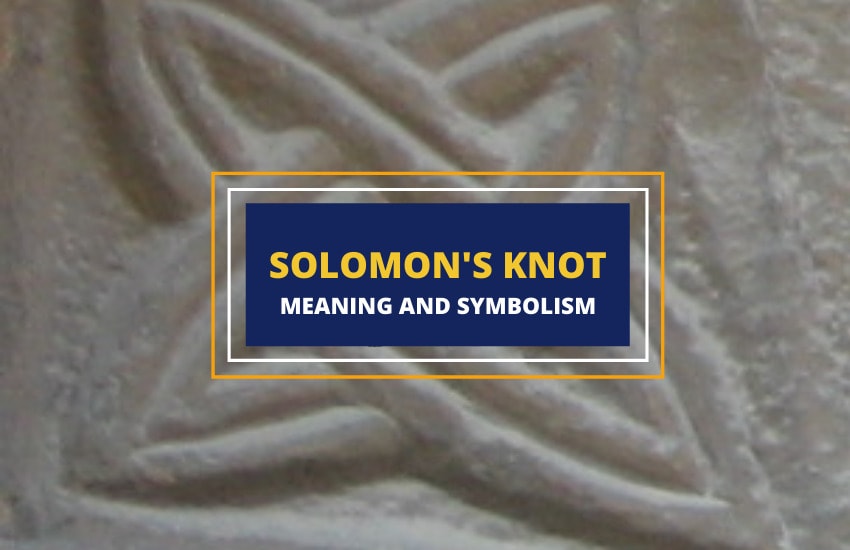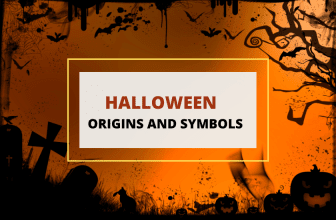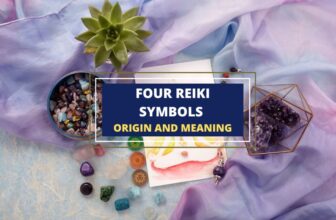
Table of Contents
One of the Celtic knots surviving antiquity, Solomon’s Knot was a popular decorative motif thought to represent everlasting love, eternity, and the union of humans with the Divine. While it’s typically associated with the Celts, the symbol has been used in many ancient cultures. The knot likely has its origins in the Stone Age and is thought to be one of the oldest knots known to humankind.
Design of Solomon’s Knot

Solomon’s Knot contains two loops, doubly interlinked with four crossings when laid flat. The interlocked loops link twice at the center. The four crosses are where the pair of loops join and interlace under and over one another. The four arms of the Solomon’s Knot can vary in design, and can feature oval, triangular, or square endings. The Celts used this knot as the foundation and basis for innumerable classic Celtic patterns.
Although called a knot, this design should fall under the classification of a link, if looked at in the context of mathematical knot theory. Accordingly, a link is a collection of intersecting knots that can link or knot together. A knot is a link with only one continuous component.
As to why it’s called Solomon’s Knot, the symbol became associated with King Solomon, the ancient Hebrew king, known for his infinite wisdom. Since he was one of the wisest Hebrew kings, these knots connote wisdom, knowledge, and, in some cases, occult power. However, the name Solomon’s Knot was given to the symbol after the Christianization of the British Isles in the 5th century AD. What the Celts called the symbol is unknown.
History of Solomon’s Knot
Like many ancient symbols, Solomon’s Knot cannot be claimed by a single culture. This symbol can be seen in synagogues, temples, ashram, and other holy places throughout the ancient world.
Many Stone Age carvings display the Solomon’s Knot as a decorative motif. You can see these in Roman mosaics too as interlaced ovals with no end or beginning. During the Middle Ages, the knot was seen as a protection amulet against certain ailments. The knot can be found in many early Christian writings, such as the Book of Kells in which it is featured heavily.
The Solomon’s Knot has a distinct association with the swastika and has sometimes been used interchangeably with it.
Solomon’s Knot Symbolism
The symbolism of the Solomon’s Knot depends on the context it’s found within. As the symbol is found around the world, its meanings vary as well. However, the most common meanings associated with the Solomon’s Knot are as follows.
- As a knot that has no beginning or end, Solomon’s Knot is viewed as a symbol of eternity and everlasting love. This is true of most Celtic knots, which feature designs made with a single line looping and crossing over itself.
- In some cases, the Solomon’s knot can represent eternity and everlasting life. This symbolism comes from the fact that the design has been found in Jewish cemeteries.
- In African cultures, especially among the Yoruba, the knot symbolizes royal status and authority.
- In some cultures, the Solomon’s Knot is viewed as a representation of prestige, beauty, and status.
- Solomon’s Knot is also a representation of wisdom and knowledge, due to its association with the Hebrew King Solomon.
In Brief
Like other Celtic knots, the Solomon’s Knot represents a variety of meanings, including wisdom, love, and eternity. However, because of its use in many ancient cultures around the world, Solomon’s Knot is considered a universal emblem of many faiths.








